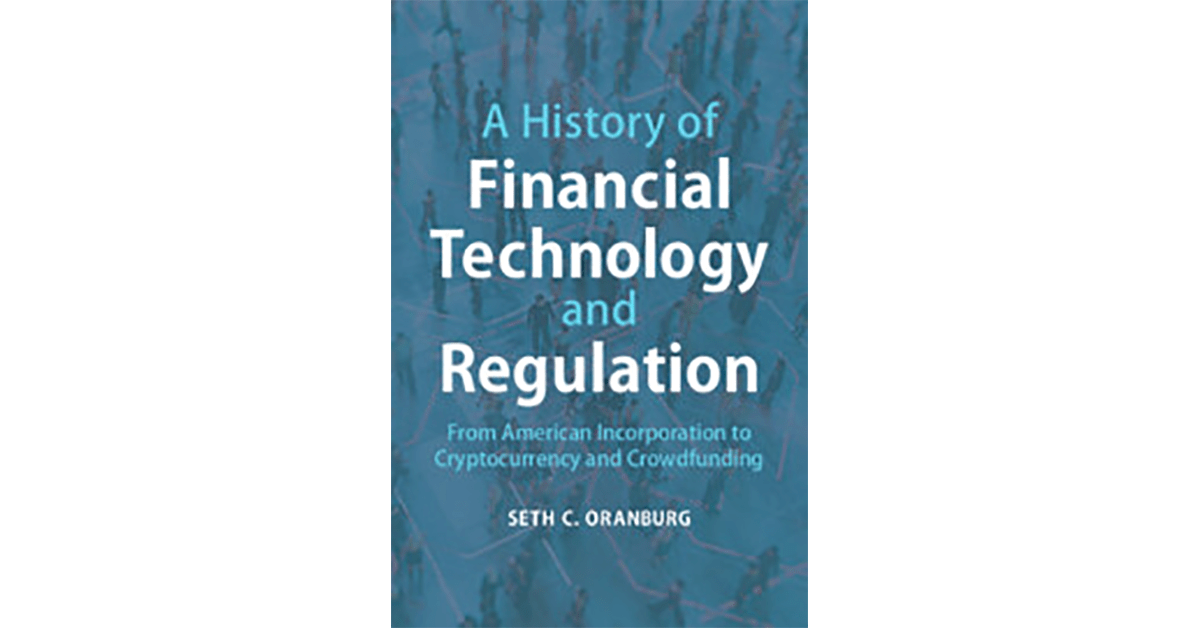Key Points
- A History of Financial Technology and Regulation explores the role of technology in finance and its impact on various phenomena such as mutual funds and cryptocurrencies.
- The book provides an understanding of key concepts in financial regulation and how it has influenced historical financial crises.
- Oranburg divides US corporate finance history into three distinct eras: the First Era (1790s-1930s), the Second Era (1933-2007), and the Third Era (2008-present).
- The author argues that technical developments have often benefited the wealthy few over the many and that smaller investors are increasingly searching for higher returns in cryptocurrency investments.
- The book highlights the limited regulation of “bucket shops” in the nineteenth century and the impact on stock ownership in the 1920s.
- Regulations introduced during the New Deal era are presented as attempts to disenfranchise small investors, setting the stage for the dominance of privileged investors in recent decades.
- The author emphasizes the need for alternative, balanced regulation to protect investors without driving them away.
A History of Financial Technology and Regulation
Seth C. Oranburg explores the role of technology in finance in A History of Financial Technology and Regulation: From American Incorporation to Cryptocurrency and Crowdfunding. The book covers various complex financial phenomena such as mutual funds, cryptocurrencies, and the stock market. Oranburg provides historical analogies and basic principles before delving into more complex digital-investment strategies and instruments. The book offers insights into key concepts in financial regulation, including the role of law and regulations in preventing or facilitating financial crises. Oranburg concludes the book by discussing current trends in finance and suggesting how the law should respond. The book is suitable for both specialists and generalists interested in regulation, finance, economics, business, and law.
In-Depth Analysis of Financial Markets and Regulation
Oranburg, a legal scholar and professor at the University of New Hampshire Franklin Pierce School of Law, presents a comprehensive overview of policy initiatives and financial markets aimed at addressing problems associated with regulation. The book explores the development of financial markets throughout history, with a focus on the influence of investors and regulators. Oranburg divides US corporate finance history into three distinct eras: the First Era (1790s-1930s), the Second Era (1933-2007), and the Third Era (2008-present).
The author’s perspective is that throughout history, technical developments in finance have been channeled by wealthy investors and regulators to benefit a select few. He argues that smaller investors are increasingly turning to investments in cryptocurrencies in search of higher returns. However, this argument fails to consider the wide range of investments already available to the public and the risks associated with excessive risk-taking in financial markets.
Implications of Limited Regulation and New Deal Era
The book discusses the limited regulation of “bucket shops” in the late nineteenth century, where smaller investors engaged in speculative stock market gambling fueled by ticker news innovation. These bucket shops, often run by fraudulent owners, put pressure on brokers’ fees and participation restrictions, contributing to a significant increase in stock ownership in the 1920s.
The widespread participation in stock speculation during this period contributed to the financial excesses of the 1920s and the subsequent market crash and economic downturn in the 1930s. In response, regulations were introduced during the New Deal era to limit such excesses and instability. However, the book presents these regulations as initiatives to disenfranchise small investors, setting the stage for the dominance of privileged investors in recent decades, such as angels and startups.
Seeking Balanced Regulation for Financial Technology
In conclusion, Oranburg suggests that creating a new federal agency in response to each financial crisis may not always be the optimal solution. Instead, he proposes exploring alternative ways to protect investors without driving them away. In the current Third Era of finance, where smaller investors have access to unregulated assets, striking a balance between excessive and inadequate regulation is crucial. The author encourages creative thinking in designing regulations that promote a safer economy and provide more balanced financial opportunities for all.
Disclaimer
The opinions expressed in this review are solely those of the author and should not be construed as investment advice. The views expressed do not necessarily reflect the opinions of CFA Institute or the author’s employer.
Professional Learning for CFA Institute Members
CFA Institute members can self-determine and self-report professional learning (PL) credits earned, including content on Enterprising Investor. Members can easily record credits using their online PL tracker. For more information, visit the CFA Institute website.







